Great artists. Vasily Perov
Vasily Grigorievich Perov was the most outstanding Russian artist of the sixties
Of the 19th century. He played a passionate denouncer of social injustice and ugly phenomena of autocracy and serfdom in Russia.

Perov art imbued with national approval of new subjects and new, relevant, artistic means. He was the first Russian artists with great artistic truth showed the plight of the peasant life in Russia, exposing the then existing social order.
He also created remarkable portraits of the cultural figures and people of the people, peasants.
In his paintings of the sixties most clearly and consistently expressed the basic principles of the new direction in Russian art and the truth of life images.
V. G. Perov was born on 21 December ( 2 January) 1834 in Tobolsk, the illegitimate. Father provincial Prosecutor, Baron; mother - housewife. His first teacher was a provincial deacon, who gave the nickname Vasily-Perov. Then he graduated from district school.
After nearly two years he studied at the Arzamas art school of A. V. Stupin.
In 1853 Perov entered the Moscow school of painting, sculpture and architecture, where he studied
until 1860, and then was sent to the Petersburg Academy of arts to work on a painting for a gold medal. He received a small gold medal for the painting " First rank."
A big influence on the work of Perov had a picture of Tropinin and Fedotov and he continued the tradition of artists, satirists forties.
A young man writes his famous works:
"The arrival of the Stanovoy ridge is not the result of" (1857)
"Scene on a grave" (1859)
"Rural religious procession for Easter" (1861)
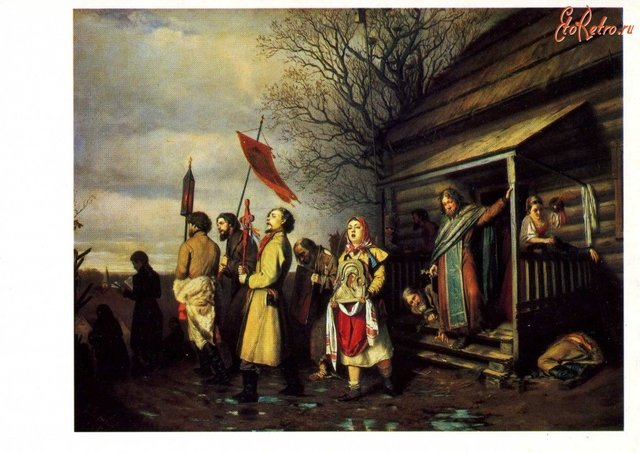
"Tea drinking in Mytishchi, near Moscow" (1862)

In the picture opposed to the hero of the Crimean war, a blind cripple, and hypocritical monk.
The Troika (1866)

Received a grant from the Academy of fine arts, Perov in 1862 went abroad. The Academy favored his talent, therefore, financial support was given to him until 1870.
For two years, Vasily traveled to Germany and Italy, but most of the time he spent in Paris, where among the poor sought their future characters.
For example, in "the Savoyard" ( 1864), the hero, the little tramp, sleeping on the threshold before the closed door, hugging his monkey.
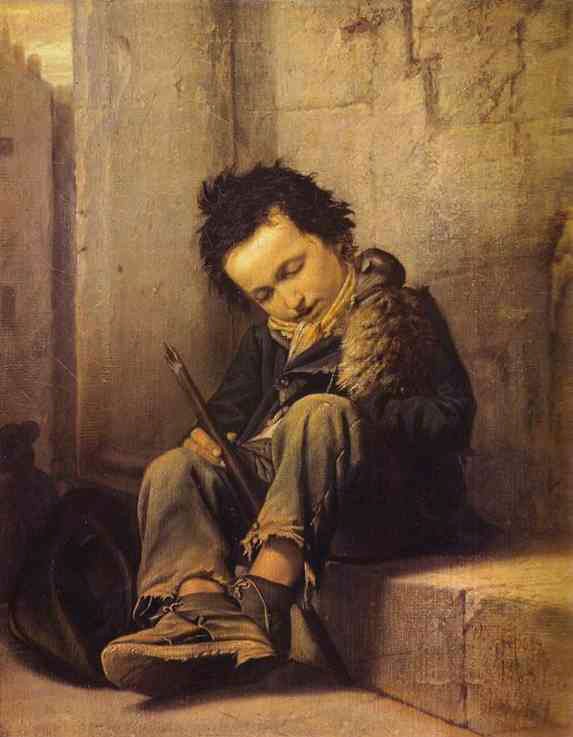
Abroad Perov honed his skills, but his soul yearned for Home, where he early
returned in 1864.
In 1865 he wrote the painting " the Janitor, who gives the apartment mistress."
In my own home even found a 1929 postcard with this picture:
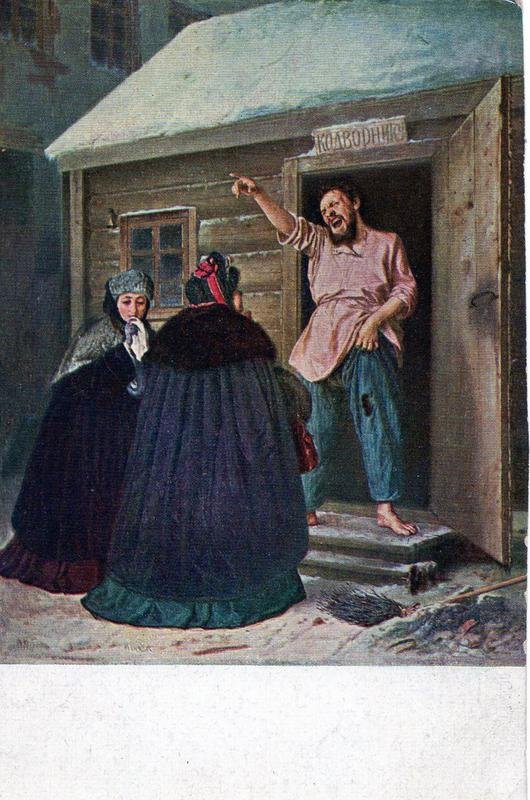
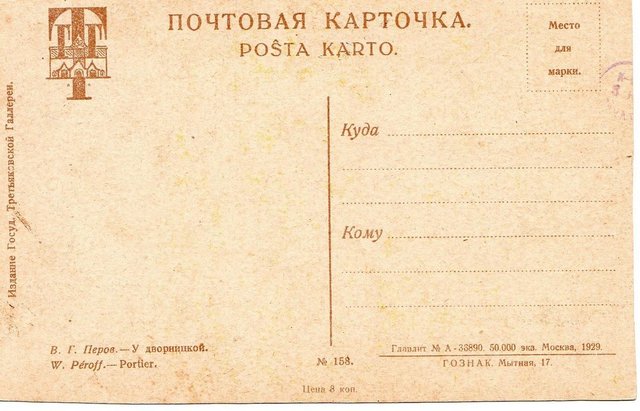
Perov wrote it immediately after returning.
It was the time after the great reforms the abolition of serfdom.
Many small landowners were ruined and had to go to town. These are mother and daughter, which we see in the picture. They came to a small apartment in a tenement building.
The owner ignored their conversation and sent it to the janitor who had to negotiate with them and give the keys. Drunken janitor shows on the cheap, miserable rooms on the upper floors of the house that they have enough money... the Janitor strongly expresses his contempt of this impoverished landed family, and even shamelessly supports his slipping pants.
His "hunting" series, in which the most recognizable painting "Hunters in camp" (1871), Perov tries to find the positive human images:
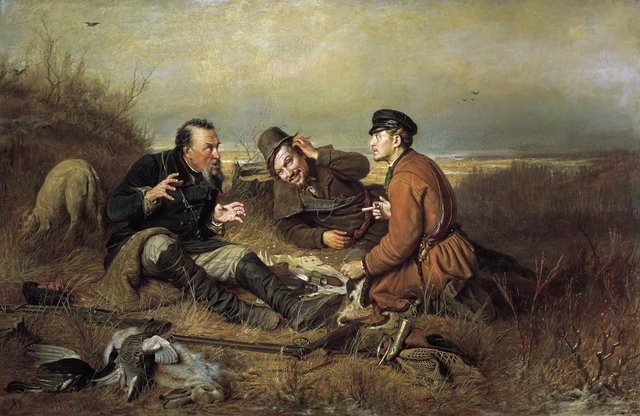
Important for Russian art have become a society of Itinerants and Perov was one of the organizers in 1870.
In these years, the main to be the portraits of Perov. As a subtle psychologist, he is interested in complex, multi-faceted, unique individual. He made portraits of A. N. Ostrovsky (1871год), V. I. dal and "Portrait of the merchant I. S. Kamynin" (1872).
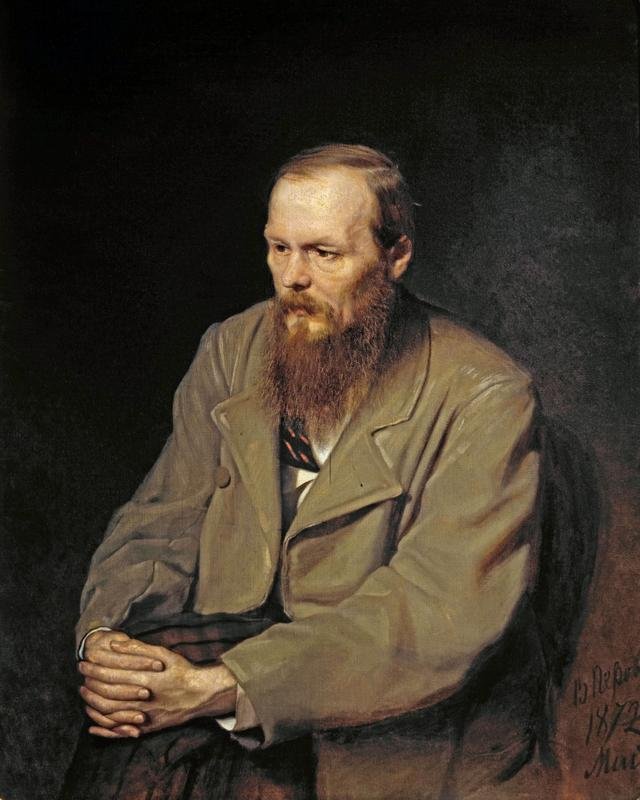
F. M. Dostoevsky (1872).
Life Perov about 49 years, ended a serious illness - tuberculosis. He died on 10 Jun 1882...